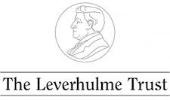 |
Newcastle University Newcastle upon Tyne NE1 7RU United Kingdom. |
 |
How much contact did you have with books when you were younger?
A great deal. I learnt to read fairly early. I should think I was reading fairly fluently by the time I was about 6, and I used to get – you’ll laugh at this perhaps – I used to get a magazine called Sunny Stories. I don’t know whether you have ever heard of it. It was Enid Blyton’s magazine. There were Enid Blyton short stories in it and Enid Blyton serials in it and I used to devour this quite avidly, and I can remember during the very hard winter of 1946/1947 when I was 7 years old, my Sunny Stories delivery was disrupted because of the cold weather. It was so cold that the publishers stopped publishing, it was dreadful. It was quite a lot of fun as a kid but it was dreadfully cold and I can remember being very indignant that my Sunny Stories had not been able to get through. So I read a lot of Enid Blyton. I know Enid Blyton is frowned on to a certain extent for children, but she was at her peak when I was young, because I’m well over 70 now. And I read a lot of Five books and Castle of Adventure and the Valley of Adventure and the River of Adventure, etc. etc. And I used to devour Enid Blyton, but interestingly when you look at an Enid Blyton book as an adult they are very, very thin – the plots are very, very thin, the characterisation is very very thin – but as a child they somehow catch you up, or they caught me up, and lots of other children.
Books that I read when I was slightly older, I should think 8, 9, 10, were the William books by Richmal Compton. And they I think still stand up. You can read those and still see them as a kind of interesting parody of middle class life between the wars, and William as a kind of anarchist in a middle-class family. And some of them are very good still, I think. So I read those. And the other one I read – the other series that I read, which most of my contemporaries were reading as well – were the Biggles books by W.E. Johns. I don’t know if they are still in print or not but […], yes I think they probably are. I read a lot of those. I read most of those that were written. A bit later on still I got a passion – I’m not really quite sure why – for school stories, public school stories. I read a lot of those. Frank Richards’ Billy Bunter books, I devoured quite a few of those. And then when I got into my teens I started to read John Buchan, and as you know, he wrote The 39 Steps, but he wrote quite a number of other books about the same character, Richard Hannay, and I read all of those and several other books that he wrote that were unrelated to that, but I went through a phase of reading nearly all the stuff he had written. And so that took me nearly to adulthood, and I also have an abiding love for P.G. Wodehouse. I can still read P.G. Wodehouse. I’ve got quite a few paperbacks of Wodehouse and I can read them again for amusement. And what I find interesting with Wodehouse is that they have tried many adaptations of his stories on the television, and I don’t think they stand up on television at all. But to actually read them – he has a beautiful prose style, very, very amusing, very, very funny. And I still love P.G. Wodehouse. I come back to him now and then.